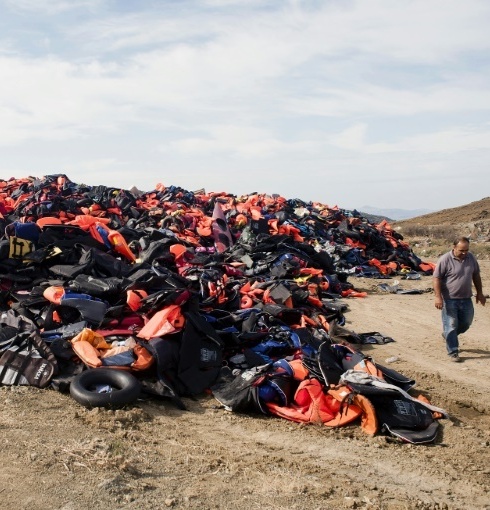Migrant crisis debris: Greek island battles lifejacket mountain
For the thousands of refugees and migrants landing on its beaches every day, Greece’s Lesbos island is a step to safety and a brighter future in Europe. But the continent’s biggest migration challenge since World War II is now presenting an unexpected environmental headache: what to do with the vast heaps of lifejackets and inflatable boats left behind by the arrivals? On the beach of Skala Sikaminias on Lesbos’ northern coast, a key landing point for migrants, a group of municipal employees are loading discarded jackets and dinghies on a truck. The city has mobilised 12 additional staff to handle the overload and sends two trucks and a crane to clear the beaches every day.
We’ve barely finished when it’s time to start all over again.
Yiorgos Katsanos, deputy mayor of Skala Sikaminias
For the time being, the thousands of life vests and boats are deposited at a dump further north. Until a permanent decision on what to do with it emerges, they’re being left there. More than half a million people have reached Europe via the Mediterranean this year - including over 310,000 landing in Greece, figures from the UN refugee agency show. Nearly 3,000 others have died or disappeared during the crossing. Two more people - a woman and a child - drowned on Wednesday off Lesbos.
If only they actually saved lives. But no, they’re junk, hastily made in Turkey or cheaply ordered from China.
Yiorgos Katsanos

Politics Lesbos